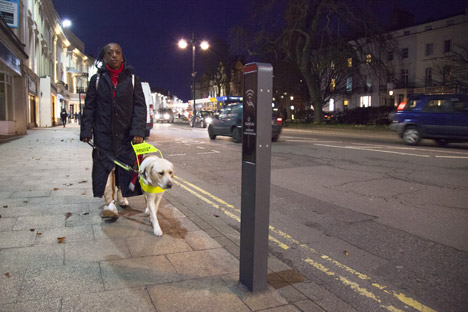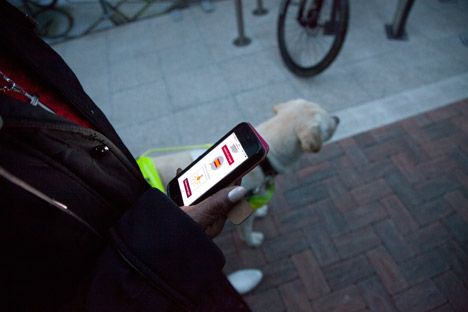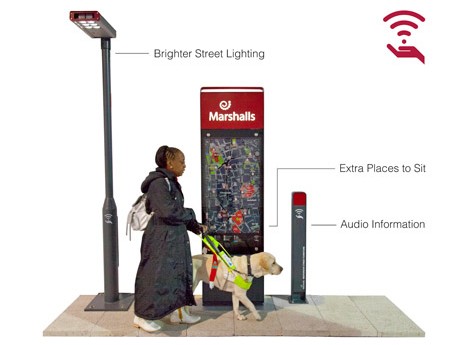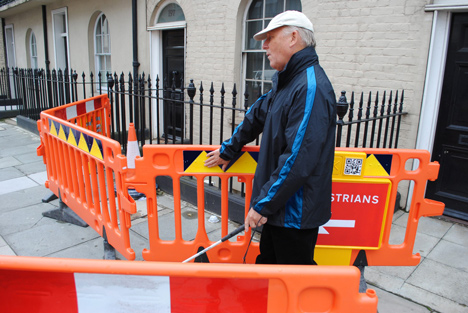Responsive Street Furniture adapts public spaces to suit pedestrians' needs
Street furniture prototypes designed to make cities more adaptable for disabled people are on show as part of the Designs of the Year exhibition at London's Design Museum (+ movie).

The Responsive Street Furniture project by designers Ross Atkin and Jonathan Scott uses digital technology to detect pedestrians with different impairments and help make their journeys easier and safer.
"Working on research shadowing disabled people as they move through public space I was struck by how much of the design of our streets was defined by a tradeoff between the needs of different people," said Atkin. "Features that may advantage one group, like more places to sit, might disadvantage another – by reducing the width of the pavement for example."

As part of an adaptable solution, the duo created a system that detects personal electronic devices of registered users.
They then designed street lamps with adjustable levels of lighting, mounted foldaway seating, pedestrian crossings with extended time limits, and signage that lights up and talks – all able to detect and respond to the user's requirements.
Users who are blind, partially sighted, deaf or hard of hearing select the services they would benefit from via a website. Bluetooth sensors in their smartphones, tablets or a low-cost fob tell sensors in the street furniture to activate their selected functions when they pass by.

"Users of the system only need to register once, logging the help they would like the system to provide and the ID of their smartphone or key fob," Atkin said. "From then on whenever their phone or fob is detected by a responsive item it will automatically provide the help they had requested without them needing to do a thing."
"At the moment the system uses Bluetooth 4.0 to identify the key fobs and phones," he added. "This is a well-supported wireless standard with range and power consumption appropriate to the system's requirements."
The system can provide audio information in different languages for tourists.

The project is nominated in the Digital category for this year's Designs of the Year awards, and is on display as part of the dedicated exhibition at London's Design Museum until 23 August.
Atkin and Scott are still developing the project, and are working with UK hard landscape manufacturer Marshalls, where Scott was recently appointed product development manager for street furniture, to bring the prototype products to London's streets this year.
"The immediate next move is to install a bollard outside the New London Architecture (NLA) as part of an exhibition," Atkin said. "This will be the first outdoor install in public space. After that we'll start trying to get some items installed as part of a bigger street scheme. Discussions are already in progress around this."
Atkin has previously designed a concept named Sightline that aims to accommodate people with impaired vision in public spaces by giving roadwork signs and barriers tactile elements to better understand their surroundings.
Additional reporting is by Alice Morby.